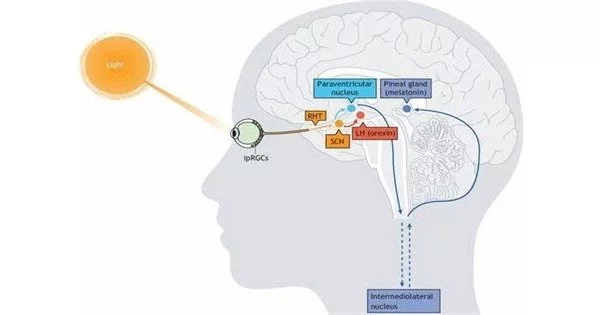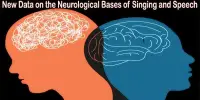The Retinohypothalamic Tract (RHT) is a neural pathway in the brain that connects the retina of the eye to the hypothalamus. It is a photic neural input pathway in neuroanatomy that is involved in mammalian circadian rhythms. It is essential for the regulation of circadian rhythms, which are the 24-hour cycles of various biological processes in living organisms, including sleep-wake cycles.
The retinohypothalamic tract is formed by intrinsically photosensitive retinal ganglion cells (ipRGC) that contain the photopigment melanopsin. The axons of the retinohypothalamic tract’s ipRGCs project directly, monosynaptically, to the suprachiasmatic nuclei (SCN) via the optic nerve and the optic chiasm.
The RHT’s primary function is to communicate information about ambient light conditions to the hypothalamic suprachiasmatic nucleus (SCN). The SCN is often referred to as the body’s “master clock” because it aids in the coordination and regulation of circadian rhythms. The RHT transmits light and dark signals to the SCN, allowing it to adjust the internal body clock in response to the external light-dark cycle.
Intrinsically photosensitive retinal ganglion cells (ipRGCs) are retinal cells that contain a light-sensitive photopigment called melanopsin. These cells are especially important for non-visual light responses, such as regulating the circadian rhythm. When light stimulates these cells, signals are transmitted to the SCN via the RHT, informing the brain of the current light conditions.
The suprachiasmatic nuclei receive and interpret information about environmental light, darkness, and day length, which is important for “body clock” entrainment. They have the ability to coordinate peripheral “clocks” and direct the pineal gland to secrete the hormone melatonin.
The RHT’s circadian rhythm regulation is critical for the maintenance of many physiological and behavioral processes, such as the sleep-wake cycle, hormone secretion, and other daily fluctuations in biological functions. Disruptions in RHT signaling, such as irregular light exposure, can cause circadian rhythm disturbances, potentially contributing to sleep disorders, mood disorders, and other health issues.
















